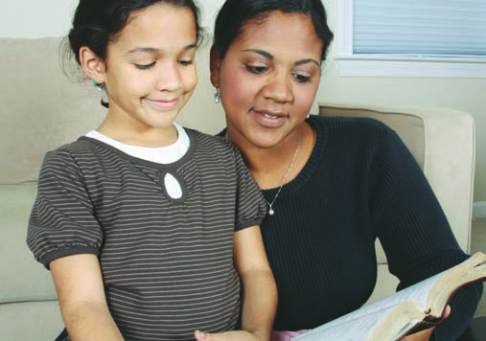Basic HTML Version



SPRING
2011
maskmatters.org
45
//
THE NEXT FEW PAGES WILL BE YOUR
GUIDE TO UNDERSTANDING BULLYING
//
“Adolescents especially have
a hard time talking to their
parents about (bullying)
because they feel they
should be able to handle it
themselves or they’re afraid
the parent might make the
situation worse.”
N G
While the statistics are staggering, it’s not too
early—or too late—to educate yourself and your
children about what bullying is, how to recognize it
and, most importantly, how to deal with it. If you’re
the parent of a school-age child, find out what an
average day is like for him or her, and learn about
their friends, including how and what they play. And if
your child has been bullied—or has bullied someone
else—a frank talk about the situation should be a top
priority, professionals say.
START TALKING
“Engage them any way
possible,” urges Ruchi
Bhargava, Ph.D., an assistant
professor at Midwestern
University in Glendale who
studies adolescent aggression
and factors that lead to violence
in school settings.
Bhargava feels particularly
strong about getting kids to
open up because she has
studied the two types of
aggression—
reactive and
instrumental—
typically seen in
school-related
violence. Reactive
is exhibited, for
instance, when a
student walks up
to another student
and punches him
in the stomach.
Instrumental
aggression is
more of a build
up of feelings and
emotions that can sometimes
manifest itself in harmful
behavior.
“Kids tend to bottle it up and
not tell anyone how they’re
feeling,” Bhargava says. “It
leads to more violent effects
because these kids feel like
they can’t talk to people,
and so they’re planning and
premeditating a way to solve
their problem.”
Instrumental aggression has
led to many tragic headlines
throughout the years. And with
research showing that young
people who commit shootings
at schools have been bullied in
the past, Bhargava has become
an advocate for parents getting
kids to open up.
But while sitting down and
having a heart-to-heart with
mom or dad might work for
some kids, it won’t for others.
That’s OK, Bhargava says.
Just keep at it until you find an
approach that works.
Try, for example, getting
in some one-on-one time
at a miniature golf course
or on the basketball court
at the neighborhood park.
Ask questions such as, “Do
you have friends?” and “Do
you feel you have enough
friends?” Then you can steer
the conversation toward such
questions as, “How do others
get along?” and “Do you get
along with your classmates?”
Another approach might

